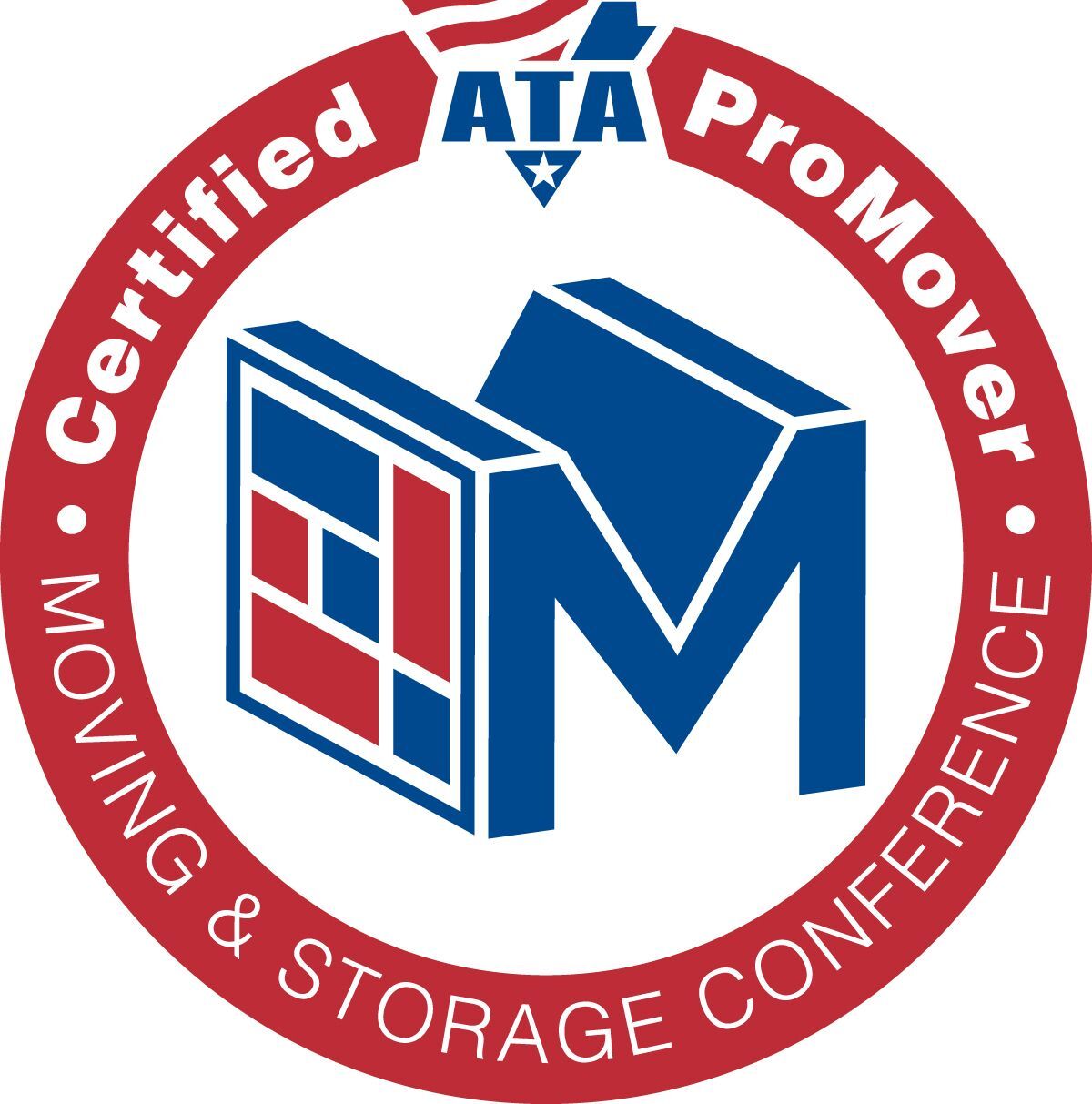Mr. Small Move Packing Tips
-
Tips relating to Saving money and time
-
Tips relating to Planning and Organization
-
Tips relating to Packing
-
Tips relating to Inventory and Labeling
-
Tips relating to Unpacking
-
Visit our Moving Tips page for additional tips related to your move
SAVING TIME AND MONEY
When preparing for your move the first thing you need to consider is the moving boxes needed to move your items safely and efficiently. Having the correct moving boxes makes your move go much more efficiently and makes your life so much easier. Although it may seem like a good way to save money scavenging boxes from behind liquor stores and grocery stores, it is not cost effective. If you consider the time and fuel consumed to run around and pickup boxes, it is easy to see why buying the proper moving boxes can be cost effective. One of the best investments you can make for your move is to purchase professionally designed moving boxes that are specifically shaped for your household items. The reason you do not want to use scavenged boxes is that they really cannot be packed safely to move from one house to another. For example the many different sized moving boxes are designed to allow easy stacking of boxes when loading them onto a truck. What this means for you, is your Mr. Small Move movers will be able to pack more boxes more efficiently into the truck. This will reduce the amount of time, man power, and possible the number of trucks needed to complete your move. What that means for you, the customer, is a cost savings in the labor needed to move your home. After your move is complete and your belongings have arrived safely and efficiently at your new home, you will be happy you invested in professionally designed moving boxes.
Using scavenged boxes also has the risk of introducing bugs into your new home. We have had customers that spent additional money on pest control services trying to rid their home of bugs that were brought in with the scavenged boxes they used to pack their belongings. You can see the potential minimal savings by using scavenged boxes is far outweighed by the risks associated with not purchasing professionally designed moving boxes. For a complete selection of moving boxes and packing materials please visit Mr. Small Move Purchase Boxes and Supplies page.
PLANNING AND ORGANIZATION
-
Start Packing Well Ahead of Time
Don't wait until the week before you move to start packing your things. If you're like most people, there are some items you can pack even a couple of months before a move and not miss them. For example, pack up out-of-season clothes, holiday wares, your good china, stemware, and books you've already read and don't plan on opening again in the next two months. It might be annoying to have a pile of boxes in your house for eight weeks, but it will relieve a lot of stress during those last couple of weeks before the move.
-
Time Allotment Make sure to leave enough time
The most common timeframe reported by people moving is that it takes 1-2 months to pack. Typically it takes 4-5 hours to pack an average bedroom, so that should give you an idea of what’s involved. If using Mr. Small Move for your packing, our team of professional packers can typically pack your entire home in one day.
-
One at a time
Wherever possible, work on packing just one room at a time (instead of several all at once) to keep things focused and organized.
-
Calendar
Pull out a calendar and plan by day when each room will be completed.
-
Delegation
If you’re moving with family members, agree with them exactly what tasks they will be doing and the date they will be finished.
-
Track your progress
Track your progress at least once per week against the dates set on the calendar. Revise your plan if you’re falling behind. If you find that moving day is arriving before you will be done packing, call Mr. Small Move and we can bring material and our team of professional packers to finish up any last minute packing.
-
Pack a suitcase
For each member of the family that is moving, pack a suitcase as if you are going on a 3-day vacation, including changes of clothes, medications, eyeglasses, toiletries, etc. Keep the suitcases separated from all the other items to be moved, such as in your car, at your new workplace, etc. so you’ll have everything you need for the first few days without searching through boxes.
-
Create “Open First” boxes
Pick one or two boxes per room as "Open First" boxes. Pack the things you'll need first at your new location. Then mark the sides of the boxes so you'll know which ones are which. See below for “Open First” suggestions.
-
Open First Box: The Kitchen
- Aluminum foil or plastic wrap
- Break-proof or disposable flatware, cups, plates, and silverware
- Coffee maker and coffee (don’t forget the filters!)
- Dish detergent
- Frying pan and spatula
- Pet food and bowls
- Scissors
-
Open First Box: Main Bathroom
- Bath mat
- Bath towels
- First-aid kit (aspirin, band-aids, hydrogen peroxide)
- Shampoo
- Shower curtain and rings
- Soap
- Toilet paper
- Toothbrushes and toothpaste
-
Open First Box: Tool Room or Drawer
- Duct tape
- Flashlight
- Flat-head screwdriver
- Phillips-head screwdriver
- Hammer
- Level
- Picture hangers
- Tape measure
- Utility knife
-
Less is more
Use packing as a way to clean out belongings for donations, a yard sale, and/or the recycling center. Aim to eliminate 1/3 of your belongings. You'll save time and expense.
-
Off the floor
Instead of the floor, use a completely cleared-off table top or counter in each room for packing boxes. Or make your own work area by assembling a Dish Pack Box and laying a flat unassembled box on top to create a work area anywhere in your home. You'll find you get much more accomplished.
-
Tracking small parts
When taking apart items to be moved, tape screws and other small parts securely to the item being disassembled. Alternatively you can create a parts box, be sure to write “Parts Box” on the box with the parts needed to reassemble your items in your new home. You'll always know where to look and save time putting things back together.
-
Save space
Use towels, pillows and t-shirts you’re packing as extra padding around fragile items. It will save room in your boxes.
-
Stacking
Stack boxes with the heaviest box on the bottom and lightest on top to prevent crushing.
-
The 30-pound rule
Keep each box below 50 pounds absolute maximum and below 30 pounds wherever possible. Heavier boxes are much more likely to burst their tape or seams.
-
Scale
Keep a bathroom scale in the room you're packing so you can keep the boxes below the weight limits.
-
Leave Stuff in Drawers
When using professional movers you can leave certain items in drawers during the move. Items such as towels sheets and clothes are acceptable to leave in the drawers. Any items that are breakable, hard or small enough to fall behind the drawer need to be removed from the drawers and packed either by the customer or one of Mr. Small Move’s Movers. Don’t worry about the drawers opening during the move all furniture is padded and a large rubber band wrapped around the entire piece to secure drawers and doors.
PACKING TIPS
Following these simple packing tips can save you time and money by making your move much more efficient and safe. By incorporating these tips while packing your belongings, you can insure an organized and efficient move allowing you belongings to be moved safely to your new home.
-
Loading Boxes
Pack heavy items in small boxes and lighter items in larger boxes.
-
Sealing Boxes
Pack all cartons tightly in moving boxes with packing paper and packing tape.
-
Use professional packing tape
Masking tape isn’t strong enough to support fully packed cartons. Packing tape is available from Mr. Small Move. View all packing materials and prices.
-
Use professional packing tape
Masking tape isn’t strong enough to support fully packed cartons. Packing tape is available from Mr. Small Move.
-
Packing Paper
Use a generous amount of packing paper inside the carton on the top and bottom to provide good cushion.
-
Use clean packing paper
Ink from old newspapers may rub off onto your items. Clean packing paper is available from Mr. Small Move.
-
Bubble wrap
Bubble wrap can be used as packing material however, use caution when wrapping items in bubble wrap that has a finished surface. After being pressed against a finished surface bubble wrap can sometimes remove the finish. Packing paper or paper pads are always safe for use on finished surfaces.
-
Mirrors, Pictures and Glass
Mirrors, Pictures and Glass should be wrapped in packing paper or paper pads and packed in mirror picture moving boxes using a generous cushion of crumpled packing paper around the outside edge of the item being packed. Mirror picture moving boxes can also be used to pack glass shelves or small glass tabletops. These boxes are telescoping to accommodate any size picture glass or mirror. Additional sections can be added for larger pieces. Glass and Mirrors over 48 inches should be professionally crated. Contact Mr. Small Move for details on custom vaults.
-
Pack Your Plates on Edge
You may think that the most logical way to pack your plates is to place them bottoms-down into the box. But actually, plates are less likely to break if they're standing on edge inside the box. Of course you also need to wrap each plate in packing paper and include plenty of crumpled packing paper on the bottoms, sides and in the corners of the box. Put so much stuffing inside the box that the plates don't have any room to shift around at all. Generally speaking, when you're packing glass items, you should pack the largest glass items on the bottom of the box and the smaller, more delicate glass items on the top of the box.
Remember to consider having Mr. Small Move pack your fragile items. Mr. Small Move’s Valuation (insurance) will only cover items packed by one of our professional packers. So if we pack it, your belongings are covered for the level of valuation (insurance) you choose.
-
Plates, Bowls, Saucers, Glasses, and other glass items
Carefully wrap these items in sheets of clean packing paper. Place packing paper in the bottom of a Dish Pack box for cushioning. Wrap each piece individually then place these items in the carton in a row. Surround each piece with crumpled packing paper, being careful to leave no unfilled spaces. Add two or three inches of crumpled packing paper on top of each tier to protect rims and make a level base for the next tier. Large serving dishes and glass baking dishes can serve as a base layer with smaller plates, saucers and shallow bowls making up a second layer. More delicate items should go toward the top of the box like glasses and stem ware.
-
Silverware
Silverware is nested together and wrapped. The nested silverware is then packed tightly with packing paper in a box. If packing a silver chest place the nested silverware back in the silver chest. Then wrap the chest in clean packing paper and pack into a box.
-
Stemware
Stemware is individually wrapped with packing paper inserted into the goblet and around the stem. Each goblet is cushioned by a thick wrapping and placed stem up in a specially tiered Dish Pack box.
-
Soft goods
Soft goods like pillows and bedding are packed in lined cartons separated by layers of clean packing paper.
-
Shoes
Pack shoes in their original shoebox, if possible, and place in a carton. If shoeboxes are not available, individually wrap them to prevent abrasive damage.
-
Pack Clothes in Wardrobe Boxes
If you don't know what a wardrobe box is, it's basically a big box with a rack inside where you can hang your clothes on hangers. You do not have to take your clothes off the hangers, fold them and throw them in the box. You leave them on the hangers and just move them right from your closet to the rack in the box. When you arrive at your new home, you can easily unload the clothes from the box, hang them in your closet. You can also use the bottom of a wardrobe box to pack shoes, purses, and folded clothes.
-
Lamp shades
Handle lampshades by their wire frames only and place in a carton lined with packing paper. Surround the shade with protective packing paper. Shades can be nested inside each other, as long as they are separated by packing paper.
-
Lamp Bases
Lamp bases should be packed in a Dish Pack box. Be sure to line the bottom of the box with a thick layer of crumpled packing paper. Wrap the lamp base and place in the box. After lamp base is in the box fill all open areas of the box with crumpled packing paper to assure the lamp base does not shift in the box during your move.
-
Unscrew Bulbs
Remove bulbs before packing your lamps. Wrap the bulb in packing paper and place in the top of the box with the lamp base.
-
Packing Electronics and Computers
1. A picture is worth 1000 words Use a digital or cell phone camera to take pictures of how complicated wiring (computer cords, speaker wires) is hooked up. Be sure to use plenty of light and careful focus so the pictures will be clear. Print each picture and put it in the top of the box holding the item. This will make hooking up the items in your new place much easier.
2. Original box If possible, pack electronics in their original box. If the original box is not available electronics can be safely packed using proper packing materials and moving boxes.- (a) Start by padding the bottom of the carton with a generous amount of packing paper.
- (b) Wrap electronics with packing paper and place in moving box.
- (c) Tightly stuff packing paper around and on top of the unit to prevent damage.
- (d) Firmly seal the carton.
- (e) Label the carton as “Fragile – Top Load.”
3. Double boxing For especially fragile electronics, pack them first in a box with an excessive amount of packing paper. Then pack that box in a larger box filled with additional packing paper. This two-box system seems like a pain but seems to do a better job isolating items from jarring impacts during transport.
4. No loose ends Wrap each cord carefully with cable organizers, heavy twist ties or heavy rubber bands. Never throw unwrapped cords into boxes- they get tangled and caught on other items.
5. Cord labels Consider getting a label maker and labeling the end of each. Then you'll know exactly which cord you're seeing and where each end connects when you put things back together.
6. The two-inch rule Use at least 2" of packing paper around each side of fragile items. -
Unpacking Electronics
When you unpack your electronics let them reach room temperature before plugging them in.
-
Books
Lay books flat in the moving box, alternating the spine and open side of the book. Place a piece of packing paper between books to prevent them sticking together. Because books are heavy, it is best to use a small book box to make them easier to carry.
-
Statues and figurines
Wrap statues and figurines with bubble wrap, then snuggly wrap with clean packing paper. If bubble wrap is not available, use clean packing paper to wrap the article until it is adequately cushioned.
-
Bottles
Bottles should be taped shut and wrapped in clean packing paper. For extra security, place bottles filled with liquid in a sealable, watertight bag before wrapping and placing in carton.
BOX INVENTORY AND LABELING
If you don't label your boxes to indicate what's inside, when you arrive at your new home, you and your Mr. Small Move movers will have no idea where each box goes. Imagine how tedious it will be to go through every single moving box trying to figure out what's inside and which room to place it in. Labeling each box can prevent this from happening and save time and money. You can label it by the room and with a general description of the contents it contains. If you include the room, then your Mr. Small Move movers will know where it goes. If you just label it by the contents, then only you will know where it goes. The label should be on the sides of the box, not on the top of the box.
-
Black Marker
Use the thickest, darkest marker you can find for labeling boxes. Pencils, pens, or light markers are almost impossible to see even just a few feet away.
-
Two sides
Label each box on the two broadest sides, not on the top, when moving boxes are stacked the top cannot be read. That way if a box gets turned, you can still identify its contents.
-
Abbreviate room names
Start box labels with the abbreviated name of the room followed by a box number, such as “BR3-5” for "third bedroom, 5th box." You can then track each box to make sure everything arrives safely.
-
"Open Me First"
Label "Open Me First" on boxes where it applies.
-
"Fragile"
Mark "Fragile" where appropriate.
-
Identify contents
Identify the major contents and where they came from, such as "Medicine Cabinet" or "Linen Closet- Towels and Wash Cloths."
-
Box Inventory
Keep a clipboard and write down each box's room, box number and contents (graph paper is great for keeping things recorded neatly).
-
Verifying delivery
When unloading, check off each box as it gets unloaded at your new place. Then you'll know everything arrived safely.
-
Labels out
Stack boxes in your new place with the labels facing out so that you can easily spot a specific box
UNPACKING
-
Unpacking
Just like with packing, have a plan for unpacking. Otherwise you're likely to end up frustrated with many half-opened boxes with your necessities still packed in a unknown box.
-
Prioritize Rooms
Focus on "Open First" boxes in the bathrooms and kitchen first.
-
Trash and Recyclable Boxes
Keep at least one trash bag (for the real trash) and one large emptied box (to hold used packing paper and other packing materials) in each room BEFORE you start the heavy unpacking.
-
Time Limits
Set a goal of unpacking a certain number of boxes each day until all the boxes are all unpacked.
When all unpacking is complete call Mr. Small Move to schedule a time for us to pickup your used moving boxes.








